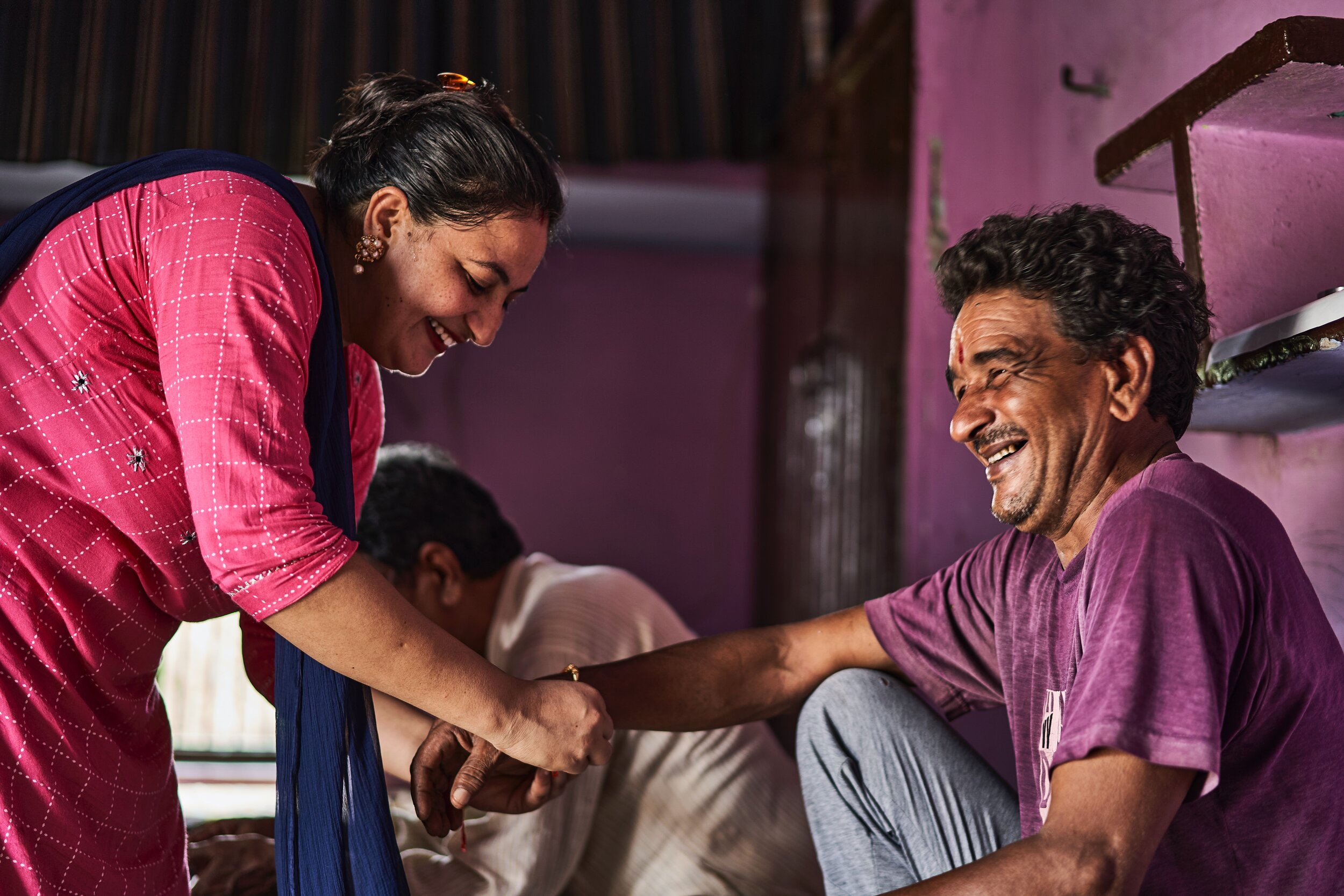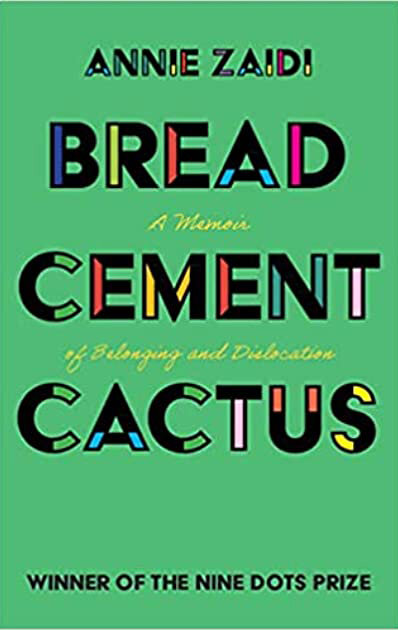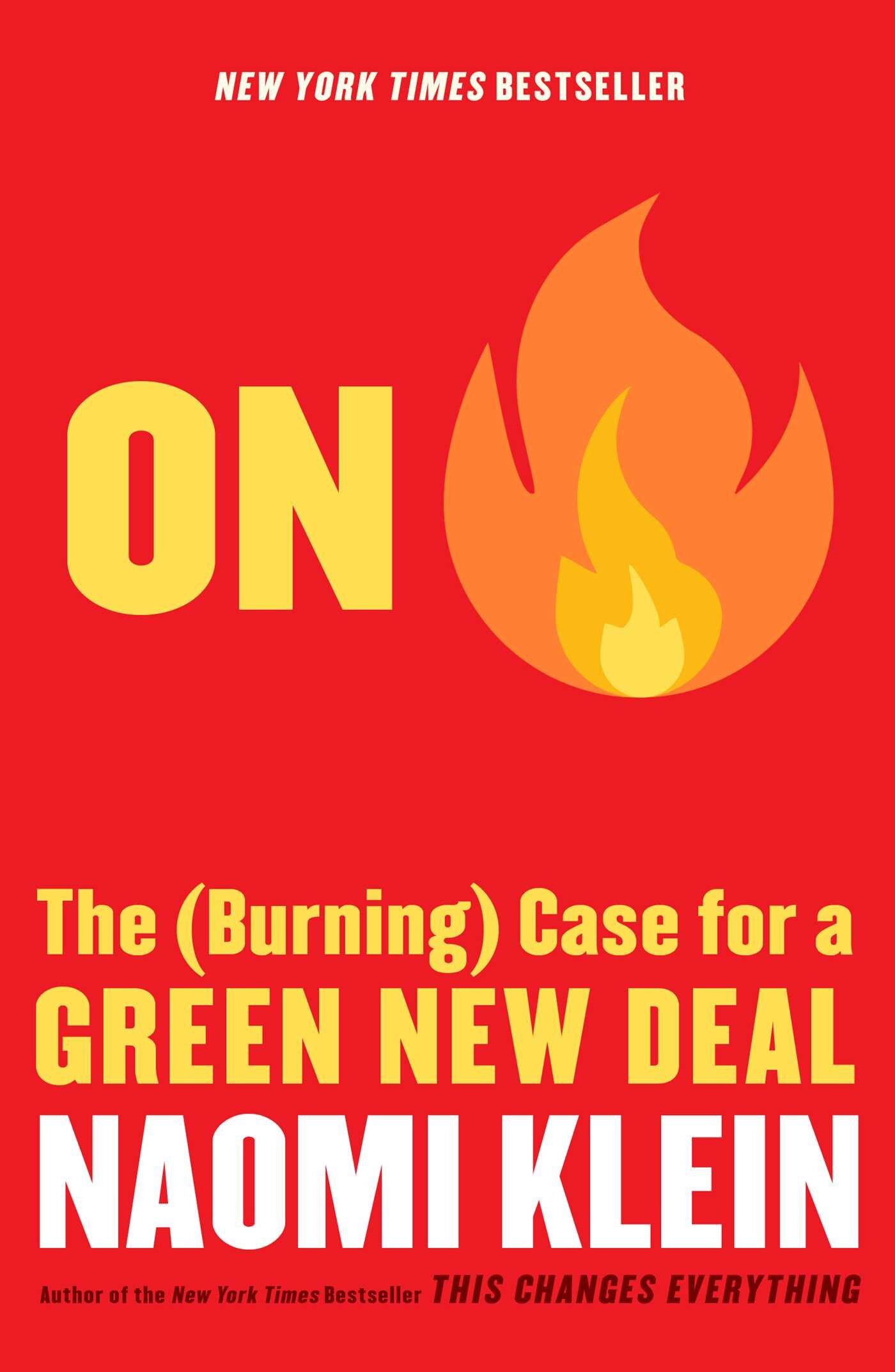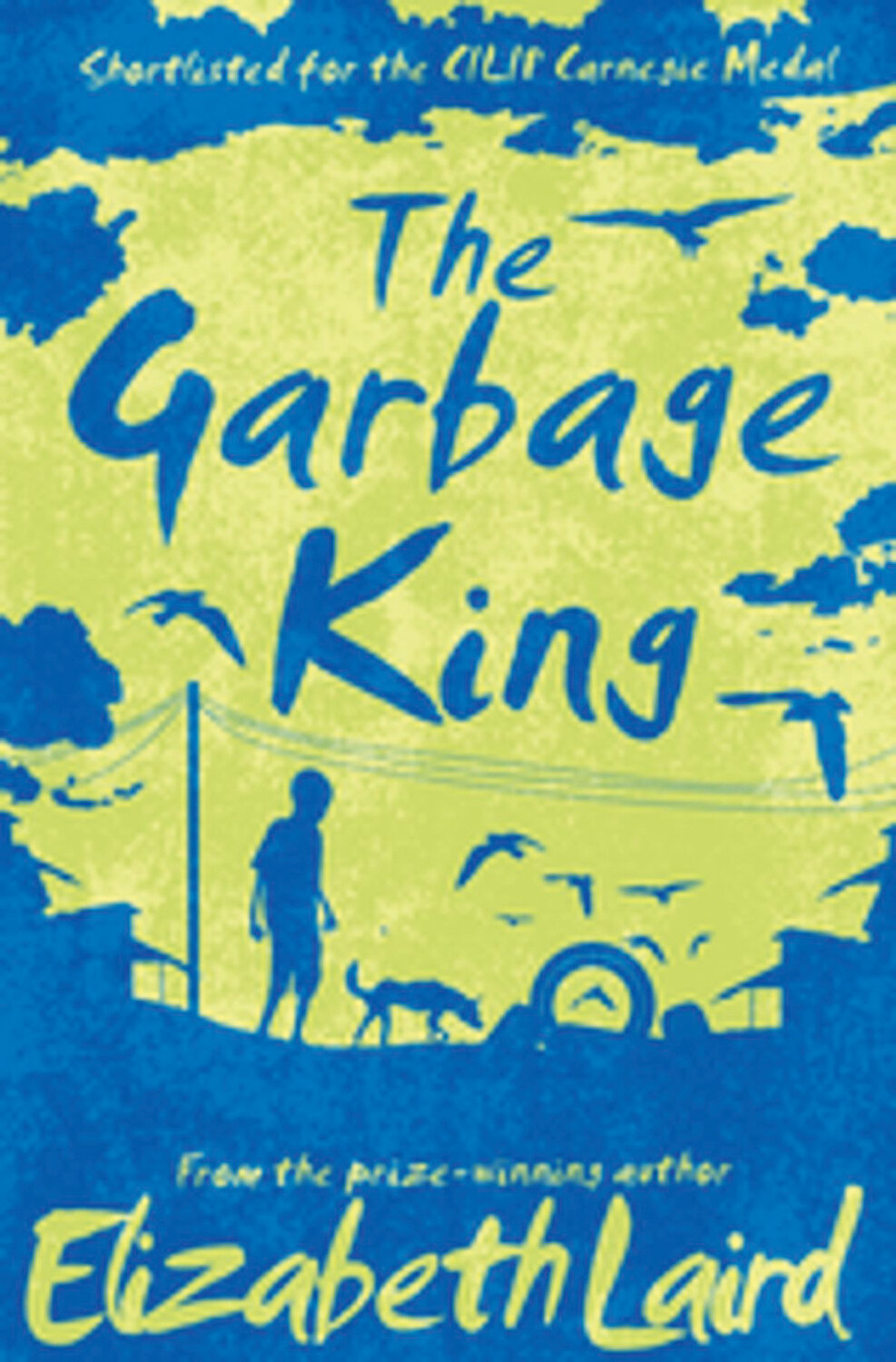BOOKWORM
HOME IS WHERE OTHERS COME LOOKING FOR YOU
Image credit: ASHWINI CHAUDHARY on Unsplash.
Bread Cement Cactus by Annie Zaidi, Cambridge University Press. Once upon a time, when people still wrote letters by hand, many writing in Hindi would sign off with “thoda likha bahut samajhna”.
Though often used to explain a shorter than usual letter, the expression translates to, a word to the wise. It came to mind as I read Bread Cement Cactus, a slim volume packed with so much insight.
Annie Zaidi’s “memoir of belonging and dislocation” begins with the Urdu translation of a quote from One Hundred Years of Solitude by Gabriel Garcia Marquez: A person does not belong to a place until someone beloved is buried there.
Towards the end, in the chapter Grave Politics, she writes, “Home is where others come looking for you, in life and after,” while describing the discrimination people continue to face even after death.
To reach this point, she traverses the landscape of her childhood in a cement factory township in Rajasthan, surrounded by tribals and original owners of the land the factory was built upon – people who melt into the background. “None of us knew their languages. Their languages were not even recognized as such by the state.”
And language politics, as she writes, is knotted into origin politics. Origin myths decide who has first claim on bread and stone, cotton and salt. The question of who is from where, translates as who can dispossess whom.
Zaidi describes the family’s ancestral home and her life as a young journalist and scriptwriter in India’s major cities. Filled with personal anecdotes, the book is also a mirror to the divisions in society and the reality of the other India.
She presents research when she writes about families so poor that they mortgage their children. What are the chances a mortgaged child can find a way to come back home?
She quotes Javed Akhtar: “It takes four generations to create a culture, but only one to destroy it.”
I stop at almost every anecdote, relating to things I know and have seen.
An account of the difficulties faced by her journalist friend in finding accommodation in Mumbai – he’s Muslim – is a reminder of all such other instances I know of.
A gut-wrenching narration of the time she hid the tabeez (amulet) her grandmother had given her lest it mark her as “the other” reminds me of someone who doesn’t have his name on his front door for the same reason.
Presenting statistics about abuse, she asks, “If home is a place of safety, where then, is home for women?”.
Her sparse prose will resonate with many in a world where people are constantly on the move – out of choice or because they are left with no other choice.
People carry what they can to reconstruct home in new places. When people began to leave for the Caribbean as indentured labour, they carried the lightest version possible: faith, language, memory.
The book ignites old memories that give one a lot to reflect upon.
HOW WE KEEP EACH OTHER CLOSE
Big Friendship by Aminatou Sow and Ann Friedman, Simon & Schuster, $35. Big Friendship is a deeply compelling book by Aminatou Sow and Ann Friedman (hosts of the popular podcast, Call Your Girlfriend ) that tackles our cultural issues with giving platonic relationships the same amount of care and attention that we often only afford to our romantic ones.
It’s an affirming book on the joys, challenges, and importance of friendships in our lives. Sow and Friedman weave the story of their own admittedly intense friendship through a larger conversation of how friendships come and go, taking on everything from the unique struggles of an interracial friendship (something I had not really considered myself until reading this book), the differences between simply performing and living the friendship, to how friendships can sometimes peter out with no real sense of closure, and how that can feel just as bad as a romantic split.
What I found interesting is that while there is certainly plenty of research and discussion around family dynamics and romantic relationships, platonic friendships so often get shunted off to the side when it comes to both individual and societal introspection, and as such, there aren’t many tools for those looking to navigate their own Big Friendship.
While this book does help to bridge that gap a bit, I was left a little disappointed by some aspects. I was hoping that the story of their friendship would offer a more practical guide on ways to strengthen my own friendships, and though the book did present a few sociological studies that were quite interesting, it also seemed to actively avoid discussing the nature of friendships in general outside of their own.
That said, I can say that this book is a must-read for anyone who values their friends (which should be everyone).
BEFORE THE PLANET DIES A PREMATURE DEATH
On Fire by Naomi Klein, Knopf Canada, $32. Naomi Klein is an award-winning journalist and author of the international bestsellers No Logo and This Changes Everything.
She is also, among other things, the co-founder of the climate justice organization The Leap. Thus when she speaks, people from across generations take notice.
For over a decade, Klein has tracked the environmental crisis and the staggeringly high stakes of what we choose to do next. She delves into the clash between ecological time and our culture of “perpetual now”.
As has been observed by some of the greatest minds, this is not an either/or scenario – we have to have solutions that protect the planet while meeting the needs of its inhabitants.
In On, The (Burning) Case for a Green New Deal, Klein makes a persuasive case for a practical framework that offers a politically viable, just, sustainable path forward for tackling climate collapse and economic inequality at the same time.
And for acting together for greater good.
The hard truth is that the answer to the question “What can I, as an individual, do to stop climate change?” is: nothing. You can’t do anything. In fact, the very idea that we, as atomized individuals, even lots of atomized individuals, could play a significant part in stabilizing the planet’s climate system or changing the global economy is objectively nuts. We can only meet this tremendous challenge together, as part of a massive and organized global movement.
OUR PAST, PRESENT AND FUTURE, IN THE RINGS OF A TREE
Big Lonely Doug by Harley Rustad, Anansi, $22.95. Writing about one of Canada’s last great trees, Harley Rustad makes you want to go hug a tree, any tree, if you can’t make it to the one that became famous as Big Lonely Doug.
When logger Dennis Cronin tied a ribbon around the trunk of a massive Douglas fir the height of a twenty-storey building standing in an old-growth forest on Vancouver Island with the words “Leave tree”, he didn’t know he was setting off a chain of events in motion.
The forest was cut, but the tree was saved. Christened Big Lonely Doug by the Ancient Forest Alliance, it became the symbol of environmental activists fighting to protect old growth forests. People began to show up in droves to keep Doug company.
But the book is about more than Doug. Cronin describes how First Nations people can trace their history not through structures that eventually crumble, but within the trees that bear the scars of harvesting or logging. The culturally modified trees (CMTs) as they are known, bear evidence of procedures that were done carefully, to remove a part of the tree without killing it.
Read that and reflect upon the devastation caused by clear-cutting. Even places where “replacement” trees are planted, the ecosystem is changed forever because the new trees all grow to the same height – Rustad compares them to blades of grass on a lawn, all cut to the same height. Thus the natural cycles of growth and decay that nurture other life forms, even the play of light that filters through some branches but is blocked by others, doesn’t take place.
There’s a saying among West Coast ecologists: in a second-growth forest, a deer would have to pack a lunch.
Rustad makes a strong case for an ecosystem that protects the rights of Indigenous people, timber workers and activists.
He weaves the ecology of the rainforests of Vancouver Island, the legends around them, the business of logging pitted against the environmentalist movement, the contentious issue of ecotourism and the rights of the First Nations into a compelling, fascinating read.
When Cronin was asked many years later why he had chosen to protect that particular tree, his response was, “Because I like it”. Sometimes, it’s as simple as that.
HOW TIME IS MEASURED
Me Counting Time by Joan Sweeny, illustrated by Alex Willmore, Knopf, $17.99. Told through the story of a boy counting down to his seventh birthday, this book explains in simple language how time is measured in more than candles and sleeps.
First I think of the blink of an eye. That’s about one second of time. I can count seconds by saying, “one Mississippi, two Mississippi”.
TEEN REVIEW
BY GANESH RAMANATHAN
The Garbage King by Elizabeth Laird, Macmillan Children’s Books, $14.99. The Garbage King is a motivational story about Mamo and Dani, who come from different backgrounds and must learn to trust each other to survive the poverty-stricken streets of Addis Ababa.
Mamo and Dani are three-dimensional and their individual storylines are very authentic. Mamo, once a slave of an abusive farmer, is barely surviving, but is used to the tough life. Dani has everything Mamo wants. He comes from a wealthy family but runs away because he’s scared of his tyrannical father. The two strands are intertwined by the author. Disappointingly, the first half of the book is very slow and boring and only becomes interesting when they meet.
Elizabeth Laird spreads awareness on issues third-world countries face such as slavery, child trafficking, child labour, and dysfunctional families. The disastrous effects of these issues are shown through Mamo and Dani’s struggles.
I enjoyed the geographical and the cultural context of the book. For example, the phrase, For the sake of Jesus, is ‘the beggar’s formula’. Ethiopia was the first Christian country in the world (4th century AD) and religious people give money and food when beggars mention Jesus.
The book has great characters and brings awareness to global issues.
• Ganesh Ramanathan is a youth volunteer at Brampton Library.







